Toilet without a cistern: features and types of designs

It is not so easy to buy such a delicate sanitary product as a toilet, because the main selection criteria are not only attractive appearance, convenience and ergonomics, it is important that the device does not take up much space in the toilet (especially for very small rooms).
The ideal solution is a toilet without a cistern: features and types of designs which allow you to choose the right model for a particular case.
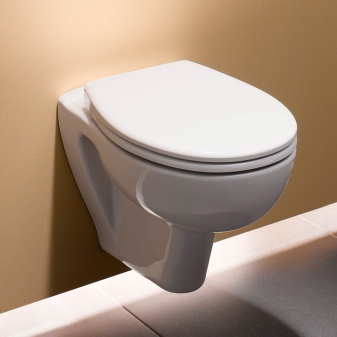
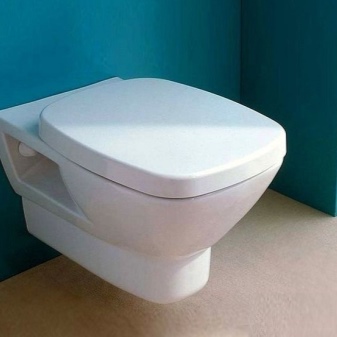
Features: pros and cons
The phrase "toilets without a cistern" in many people does not cause very correct associations. It is mistakenly assumed that this is a plumbing unit with an installation that provides for the presence of a drain tank hidden behind a partition. That is, the system provides a reservoir for storing water, which is cleverly hidden from prying eyes behind the facing material.
In fact, the cisternless toilet has a significant difference from the traditional unit. It is a product in which water is flushed out without the participation of a tank, and all cleaning operations are provided by a special device - a drukspüler.
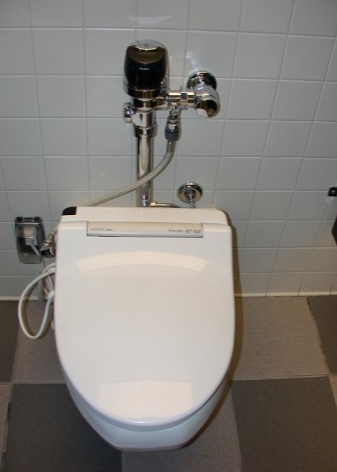
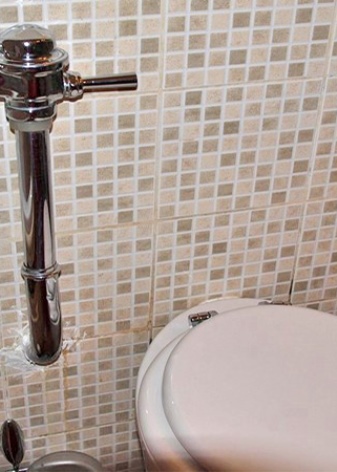
This cisternless flush system has several advantages.
- Attractive appearance. The toilet looks stylish and modern.
- The compact design allows you to save space in the room, the absence of a tank visually expands the room, allows you to install additional decorative elements or necessary devices in the restroom, for example, a sink for washing hands. This is especially true in apartment buildings with a small bathroom.
- The device does not require time to fill the tank, water is continuously drawn from the water supply system under a certain pressure, thus ensuring uninterrupted flushing of the bowl. Due to this property, tankless systems are most widely used in public bathrooms, where constant flushing of water is required.
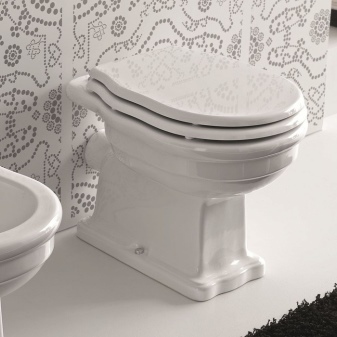
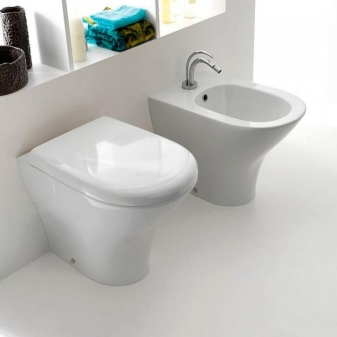
If we talk about disadvantages, then there are even a little more of them than advantages.
- The need for the constant availability of water in the water supply system, in case of a sudden shutdown, there will not be even the slightest supply of liquid.
- Drukspühler works exclusively with a certain water pressure in the current water supply system (from 1 to 5 atm), not all owners can boast of such a pressure. Therefore, it will be necessary to consider the installation of special pumps.
- The operation of the flush system is somewhat louder than the operation of the built-in cistern, although it belongs to the 1st class of noise.


Views
The development of modern technologies in various areas of production has led to the improvement and modification of various devices, including the cistern. Tankless toilets can be floor-standing, they are mounted directly on the floor close to the wall, therefore they are also called attached. And there can also be suspended or wall-mounted options, such devices are mounted directly to the wall. For flushing waste, a special tankless flush system Drukspühler is provided, which can be placed outside above the toilet or hidden inside the wall. The word "drukspühler" is of German origin and is translated as "flushing water by pressing on the mechanism."
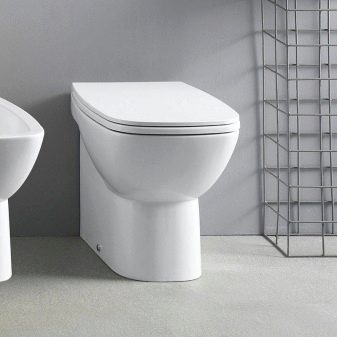
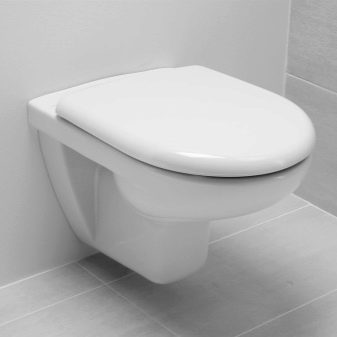
Both systems, both external and internal, are distinguished by good visual perception. The variant of the hidden Drukspühler device externally looks like a conventional wall-hung toilet with an installation system. When installing the system by an external method, a small chrome pipe with a built-in water supply button appears.

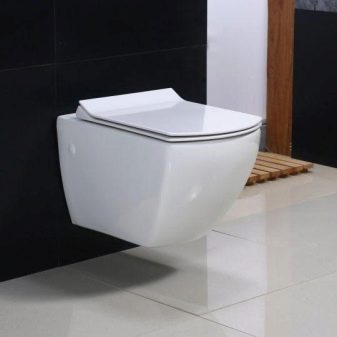
The scheme of the Drukspühler device is quite simple.
Included in the device:
- push main valve;
- regulator;
- spring mechanism;
- additional button;
- indentations for pressure stabilization;
- drain pipe.
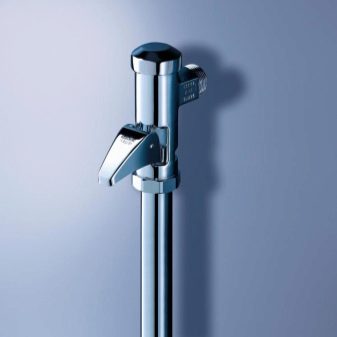

Such a device has two connection points:
- to the plumbing system;
- to the branch pipe through which the flushing fluid enters the toilet.
These models of flush systems are in demand due to not only their appearance, compact size, but also their ease of installation.

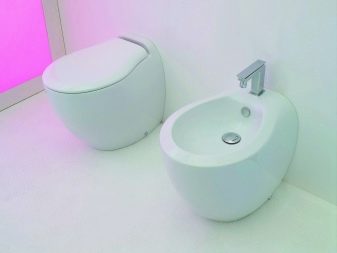
How does it work?
Surely many thought about the principle of the drain system, how the water is drained without a tank. The Drukspühler structure is not too clever, but rather simple. The control of such a drainage system is carried out using a special cartridge, consisting of two compartments. In the middle of the cartridge there is a special diaphragm with a small hole, which helps to gradually stabilize the pressure in these two chambers.
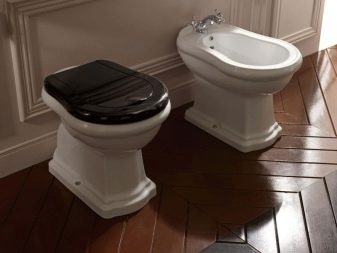
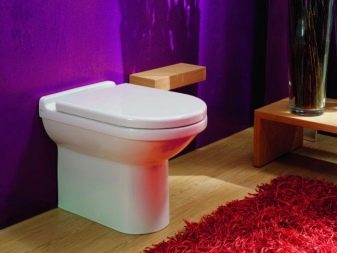
At that moment, when the internal pressure of each of the compartments stabilizes, a spring mechanism is triggered, shutting off the flow of water, which in the same turn causes the flow of flushing fluid into the toilet bowl, carrying out an automatic flush. The volume of water flushed into the toilet is 3 or 6 liters, although models have now been developed that can fix the required displacement.
These systems can be made from materials such as metal or plastic. The first option is, of course, considered more reliable, although plastic systems have also established themselves as a durable device. Metal structures are more expensive than their plastic counterparts.
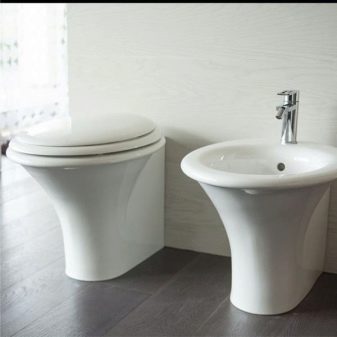
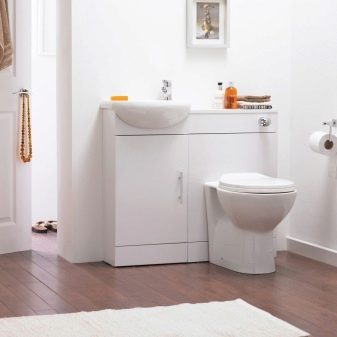
How much does it weigh?
To answer this question, you need to go back to the appearance of the device. As mentioned earlier, this is a small piece of lightweight pipe. Naturally, if the pipe is plastic, then the weight of the system will be slightly lighter than that of the chrome one. The pipe protrudes from the wall only 50-80 mm, this value is incomparable with the dimensions of any cistern, not to mention the weight.
The developers of this system have provided for a small, stable water flow, thanks to the device of the button, divided into two sectors, one of which is conceived for economical flushing.
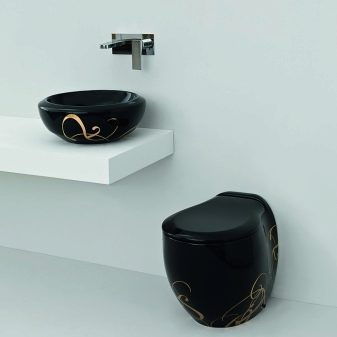

There is no need to worry about repairing this new item, since the number of built-in operating elements in the Drukspühler is so small that the probability that something will break is zero. The actuator itself is easy to replace, just unscrew it and insert a new cartridge.
DIY connection steps
An attached toilet with a tankless drainage system is installed and connected to the sewerage system, similar to any other plumbing fixture of this kind. But the connection of the system to the water supply has its own nuances and some features. This process is simple, it is quite possible to do it yourself, however, it requires compliance with absolute accuracy and sequence of operations.
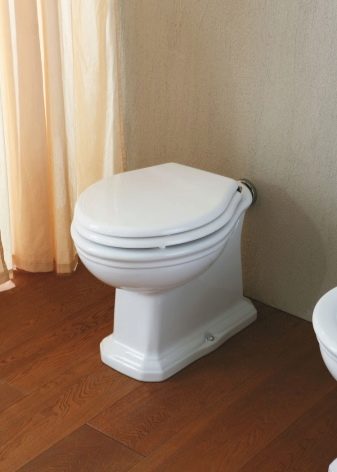
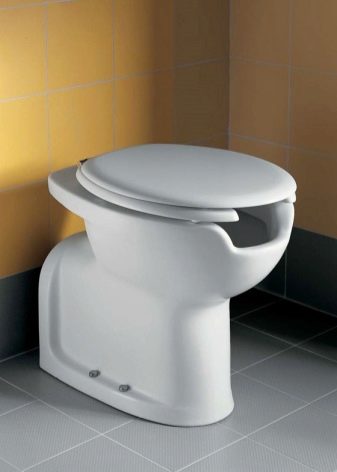
- It is most advisable to carry out the installation in a pre-existing place, it is very expensive to displace communications. But if the installation of the toilet is carried out with movement or simply in a new place, it is necessary, first of all, to bring cold water to the planned point. It is important that the connection point is located on the wall at a height of 90 cm from the floor surface and centered in relation to the toilet.
- Usually, the water line is placed in a pipe, which is made on the wall, leaving only a hole for connection. Then the place of scaling is putty. Another important detail when supplying water is the correct selection of the pipe diameter.As a result, a plug is installed on the finished supplied pipe, since further manipulations will be carried out only after all finishing work is completed.
- Upon completion of all finishing work in the toilet room, you can start installing a tankless water supply system. At the next stage, it is necessary to connect the Drukspühler to the outlet of the water pipe by removing the plug from the supplied pipe. The ends of the pipes are fastened using a union nut, screwed first by hand, and then tightened with a wrench. The end of the Drukspühler nozzle with the toilet nozzle is also connected using union nuts, in this case it is also necessary to use a silicone gasket.

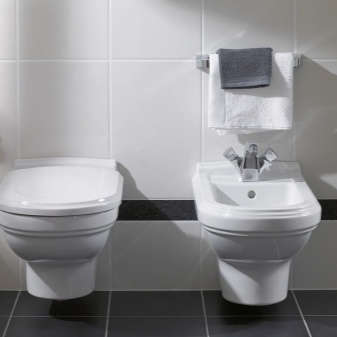
This is the whole installation process, at this stage you can open the water supply and check how the installed system works. In principle, the installation of a cisternless toilet is much faster and easier than installing a conventional toilet with a cistern. This reflects the practical approach of German developers. The equipment looks compact, in real life it does not cover a lot of space, it is located in the immediate vicinity of the toilet.
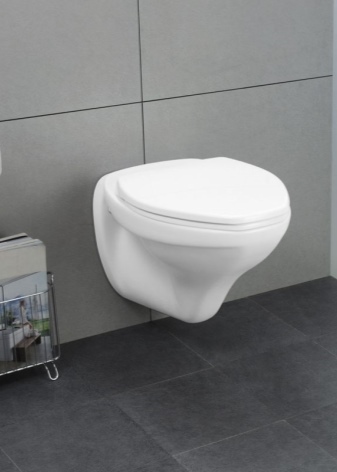

Beautiful solutions in the interior
As mentioned earlier, there are two types of special flushing devices: external or external, and also internal or hidden in the wall.
Both of these systems are quite compact. The main difference is considered to be a different effect on the perception of the general appearance of the room. Of course, it would be logical to assume that from the point of view of style and design, the option with a system hidden in the wall is better and more practical than an outdoor device, but this opinion is erroneous. Some modern interior styles require outdoor piping. For example, a portable Drukspühler will perfectly fit into a high-tech interior.
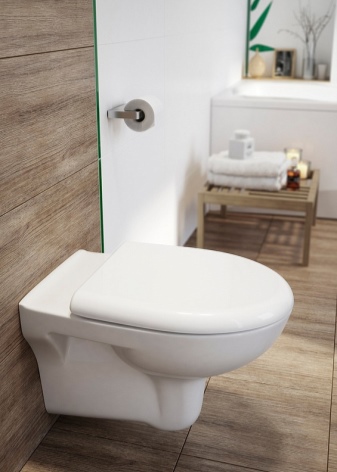
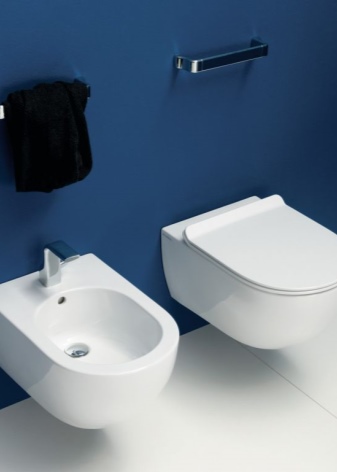
Due to the absence of a cistern, the Drukspühler is considered an ideal option for installation in small bathrooms of small dimensions, also in toilets of offices and other various premises with limited space. In addition, regardless of the size and style of premises, such systems are widely used in latrines of various public and administrative institutions.
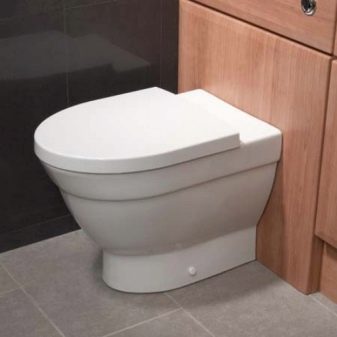
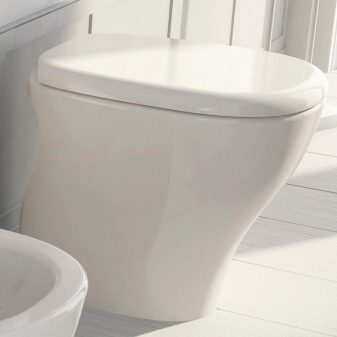
For information on how to install a toilet without a cistern, see the next video.













I like hanging toilets most of all, it washes the whole bowl.
The comment was sent successfully.